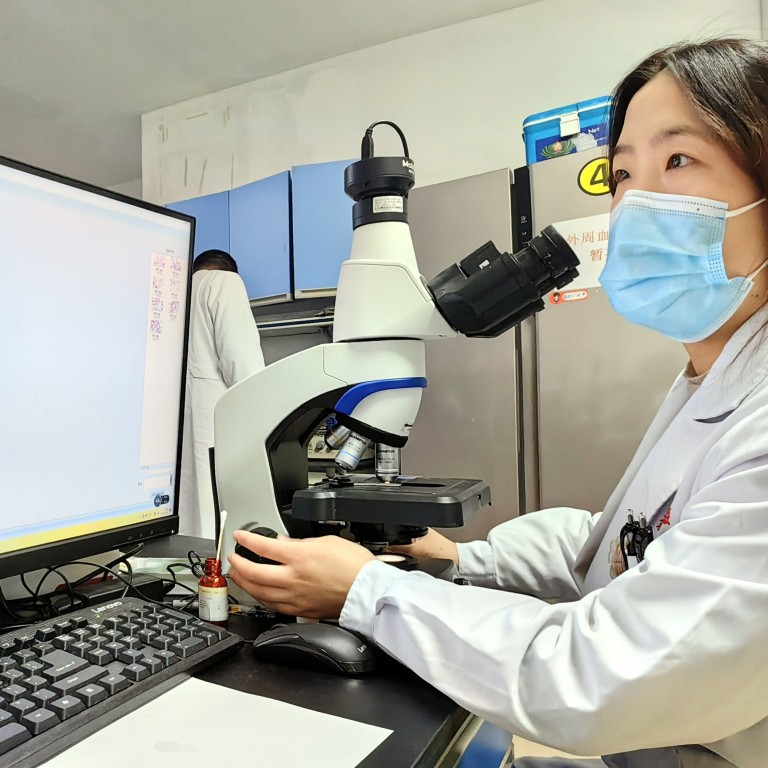
China aims to plug gap between lab and market in hi-tech push with patent rule changes
- Economic Daily commentary on Friday said China’s universities and research institutions need to expedite the issuance of high-value patents
- Beijing is seeking new avenues of growth amid waning economic momentum and continued efforts to fend off an escalating tech war with the United States
The state-run Economic Daily said in an editorial commentary on Friday that China’s universities and research institutions need to expedite the issuance of high-value patents that align with industrial demands.
“Universities and research institutes have faced a long-standing challenge with the low application rate of patents, both because they tend to produce abundant results with limited precision that can meet industrial needs, accompanied by inadequate channels for transforming patents into market-ready applications,” the report said.
In China, researchers’ academic merits tend to be predominantly gauged by their publication output, impacting their motivation to delve into the commercialisation of their research findings, the report added.
This requires us to bring more scientific achievements from the laboratory to the market
The call came as Beijing grapples with enhancing the industrial utilisation of its hi-tech sector to provide a new avenue of growth amid waning economic momentum and continued efforts to fend off an escalating tech war with the United States.
“As patents based on technological innovation increasingly decide the competitiveness of firms, regions or even nations, this requires us to bring more scientific achievements from the laboratory to the market,” the report said.
The commentary followed Beijing’s issuance of comprehensive guidelines on patent stock inventory for universities and research institutions, which asked for accumulated patents to be uncovered by the end of the year for evaluation by companies.
The guidelines asked research institutions to identify patents with greater potential for market demand, higher economic value and aligned with the needs of key industries, and put them into a database managed by the China National Intellectual Property Administration, according to the document released last week.
China must ‘tolerate failure’ in science and tech to close gap with US
The patents would be provided to companies like high-end manufacturers and hi-tech firms for evaluation regarding the feasibility of market adoption, with assessments and demand communicated to universities and research institutes via the data platform.
The document requires local governments to submit comprehensive implementation plans by the end of the month, finalise the inventory of key universities’ patent stock by the end of June and complete the entire inventory by the end of the year.
It pledged to establish a smooth mechanism for the application of patents oriented to industrial needs and transform a number of high-value patents by the end of 2025.
The administration also said it would cease funding applications for patents and drastically reduce and gradually abolish incentives for patent grants, and instead award individuals or teams that have translated patent results into the market and garnered profits.
In China, there is a long-standing mismatch between the priorities of university researchers and companies regarding patents
“Adjusting incentives to meet market applications can help alleviate such gaps, but Beijing also needs to implement broader reforms for universities such as re-evaluating the way professors are assessed on their publication output,” said Peng Peng, executive chairman of the Guangdong Society of Reform.
“In China, there is a long-standing mismatch between the priorities of university researchers and companies regarding patents, as researchers prioritise publishing papers to secure revenue and higher positions, while companies prioritise patent utilisation in the industry to maximise profits.
“This [means] China has the world’s largest number of patent applications, but very few can be translated to the market.”
China leads global patent race but needs ‘breakthrough’ in AI, chips
Per the 2022 China Patent Survey Report released by the China National Intellectual Property Administration, the industrialisation rate of inventions in China was 36.7 per cent, of which 3.9 per cent was from universities and 13.3 per cent from research institutes.
Although there are no corresponding statistical surveys in the US, based on comprehensive data provided by several universities, Shen Jian, secretary general for science and technology at Renmin University of China, estimated that the rate of conversion of scientific and technological inventions in 2020 was about 50 per cent.

